
After the visual flood
From virtual reality to all-encompassing environment
03/04/2018
Katja Novitskova. If Only You Could See What I’ve Seen with Your Eyes. Stage 2. Art Museum of Estonia KUMU, Tallinn, 23.02.-10.06.2018
The contemporary art gallery of KUMU is an irregular enfilade with an area of one thousand square meters on the fifth floor of the Art Museum of Estonia, and it is one of the biggest and most prominent exhibition spaces of this genre not only in Tallinn, but in all of Estonia. During the 12 years that KUMU has been operating there hasn’t been a lot of solo exhibitions. Mostly they were dedicated to the artwork of artists whose long and distinguished careers allow us to talk about them if not as veterans of contemporary art, then as modern classics. In this context the exhibition of Katja Novitskova, born in 1984, may surprise the viewer in a pleasant way. Here we have an artist who has been named one of the founders of the so-called post-internet art which has become a very relevant international genre, and the museum accurately decided to take the opportunity to organise the first solo exhibition of Novitskova in her homeland.

Just ten years ago the trending emphasis in the theory of contemporary art was on the idea of dematerialising the artistic object: the “disintegration” of visual and material identifications of contemporary artworks in their conceptual components, putting the idea and/or its text at the heart of the matter. The appearance of internet art (net art for short) lead to a complete transition to a virtual level, as if the artworks seemingly didn’t exist any more (or maybe they did exist?) without the technology to emulate it. It seems that post-internet art can mean a reverse process, the re-materialisation or the return of virtual images and forms to a material setting. Often it is done by way of appropriating popular internet images where the method of “recycling” is itself a direct commentary on our culture: it is not always necessary to create new original images in their visual abundance, it is more important to be able to create new relevant contexts for the already existing ones.
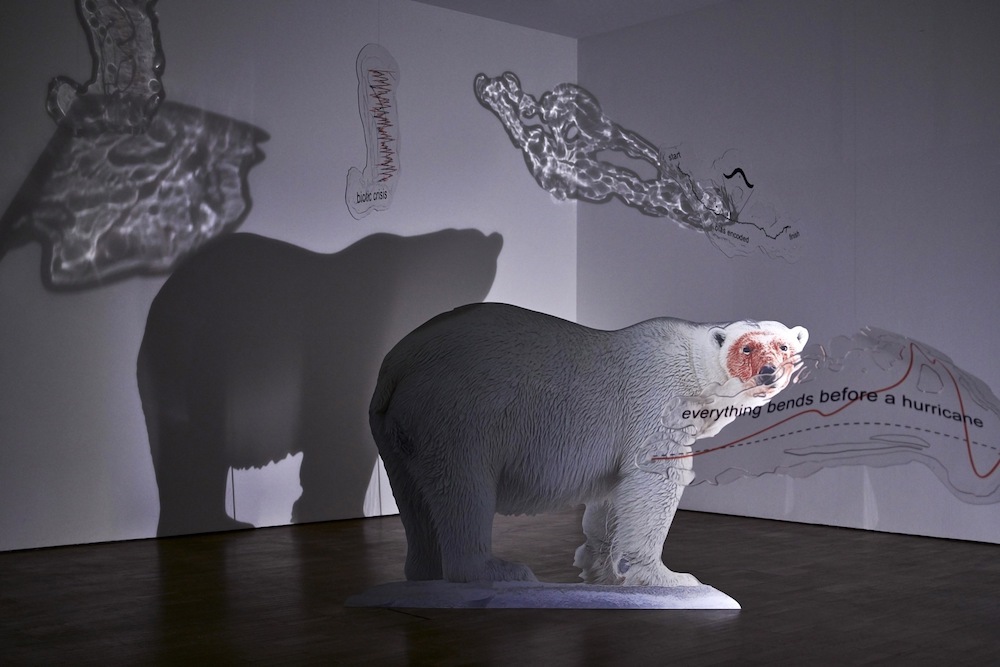
The definitions of “original”, “context” and “virtual" are, without a doubt, well-known to Katja Novitskova, who graduated from the Department of Semiotics from the University of Tartu, then continued her education in the Digital Media Department at the University of Lübeck, and finally got a degree in Graphic Design at the Sandberg Institute in Amsterdam. It was in Amsterdam, and then in Berlin, that Novistkova as an artist was formed. One of her first group shows was an exhibition curated by Margit Sade called “Utopian Grids” in Amsterdam (2009). In less than ten years of her art career, Novitskova became one of the most internationally recognised artists from Estonia, as her last projects include a solo exhibition in New York and in Shanghai. In 2017 Novitskova represented Estonia in the 57th Venice Biennale, exhibiting in collaboration with the curator Kati Ilves a project called "If Only You Could See What I’ve Seen with Your Eyes”.

The exhibition at KUMU is the continuation of the Venetian project. The name of the exhibition is a quote from one of the characters in the cult film “Blade Runner” (directed by Ridley Scott, 1982). These words were uttered by the robot-replicant Roy Batty to the engineer who created the fragile mechanism of his eyes. The mechanism of vision and perception, whether it is physical, physiological, socio-psychological, culturological, etc., is a central theme in Novitskova’s artwork. In the era of the never-ending visual flood (including the internet) she is interested in which exact images grab our attention and become popular, and what meaning they bring and what symbols they could become if they get drawn in by an artist’s interpretation. The so-called 2-D sculptures became Novitskova’s signature trademark, images found on the internet that were then transformed into objects. Sculptures with the photographs of popular cute animals on the internet slowly changed their motifs to more dark ones, touching upon the theme of an ecological crises that threatens us during the time of global technologies.
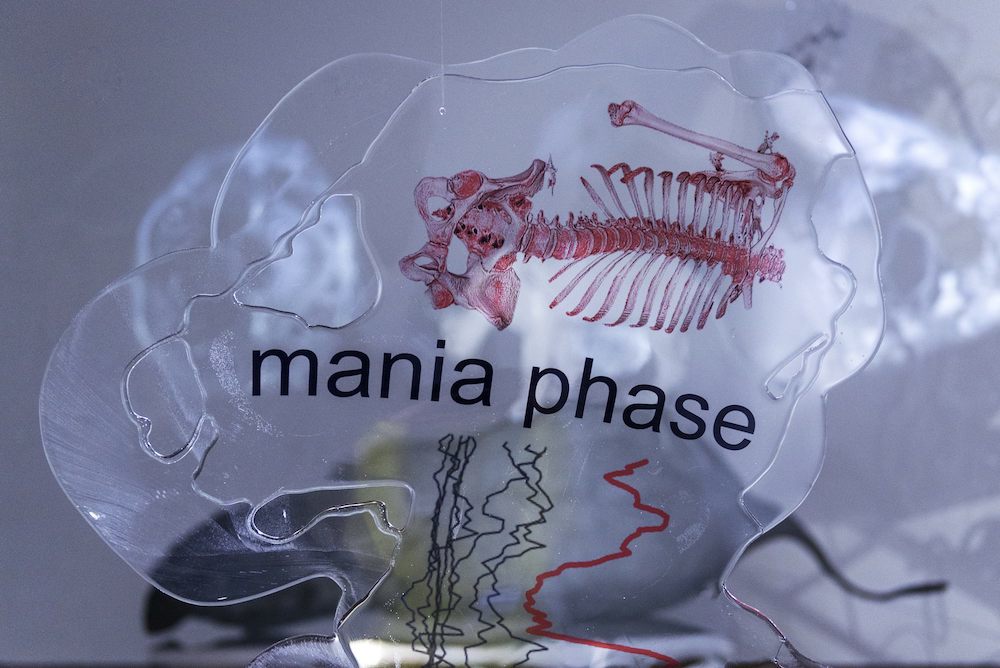
The exhibition "If Only You Could See What I’ve Seen with Your Eyes” plays out a theme of dystopia in apocalyptic tones which might become a reality in a future not too distant. Here robots and mechanisms take charge instead of people, and instead of the extinct nature there are only machine-created images left over which is not even the second but the third rendition of nature. The artist is asking the question of what would happen after the (visual) flood and gives us several scenarios which scare and captivate us at the same time. Novitskova’s artwork is often compared to the literary and cinematic genre of science fiction. Here the most interesting question is how to take science fiction themes and work with them in visual art, using its characteristics and unique defining features. Novitskova copes successfully with this task as she refuses to use a clearly linear narrative and creates a special all-encompassing environment that appeals to the visually spatial sensations and emotions of the viewer.
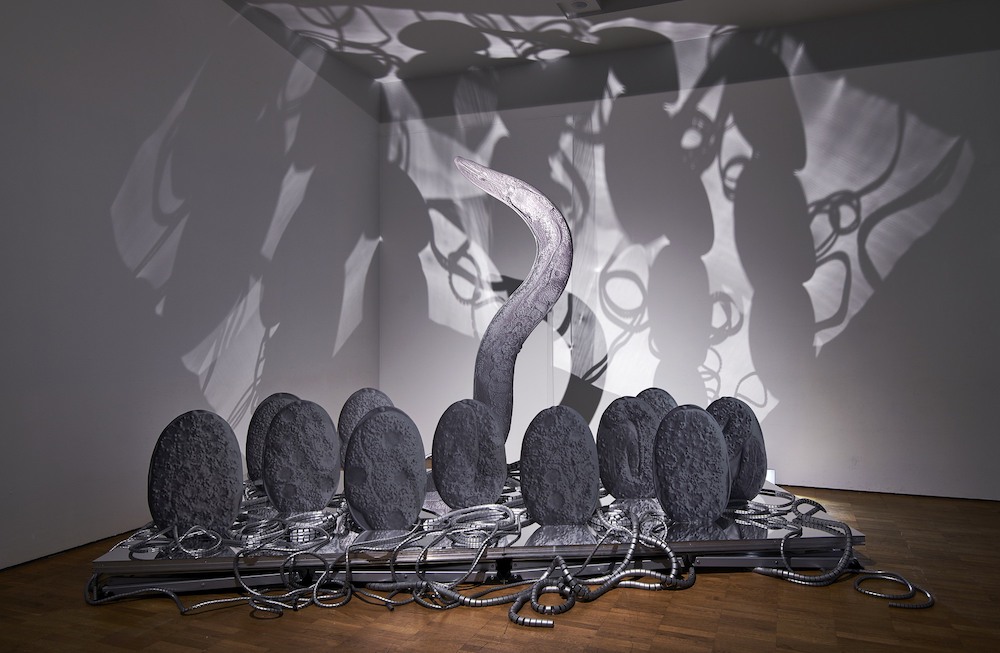
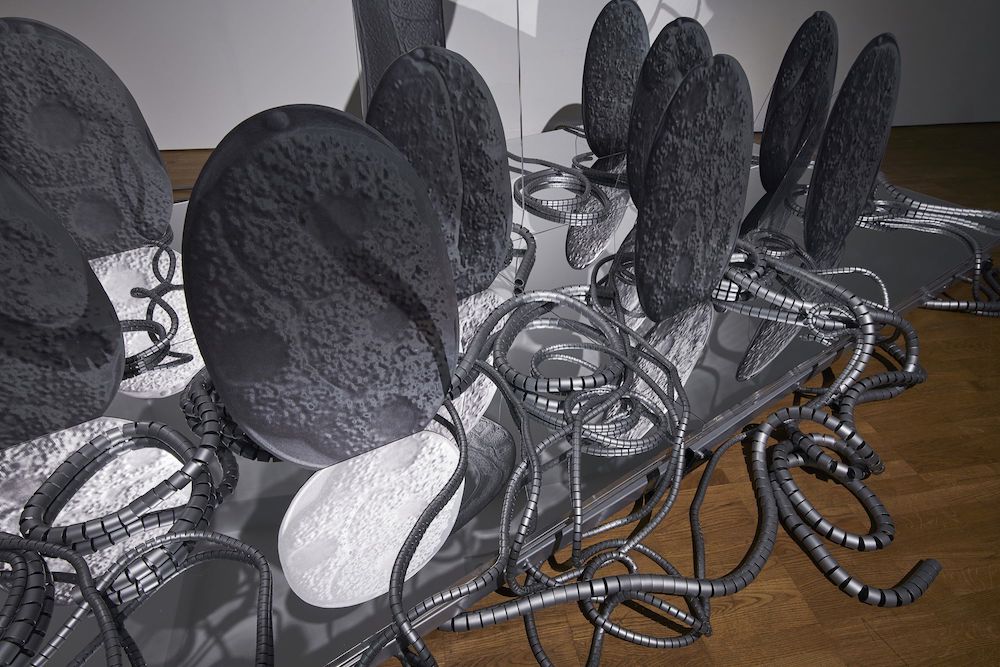
The understanding of 2-D sculptures can be seen as a paradox, because 3-D is sculpture’s fundamental feature, the same way colour is essential in painting or line in graphics. But Novitskova’s 2-D objects optically conquer 3-D space by casting impressive shadows. It is not just the material objects that play an important role at her exhibitions, but also their shadows, reflections, light glares and projections as they create a unique impression of fullness and integrity of space. Novitskova invites the viewer to an all-encompassing environment which generates the experience of alternative reality. By exchanging the narrative with atmosphere, the artist avoids the tendencies of literature and morality, as she asks important questions indirectly, giving the viewers a choice about what conclusions they will make from this exhibition himself.
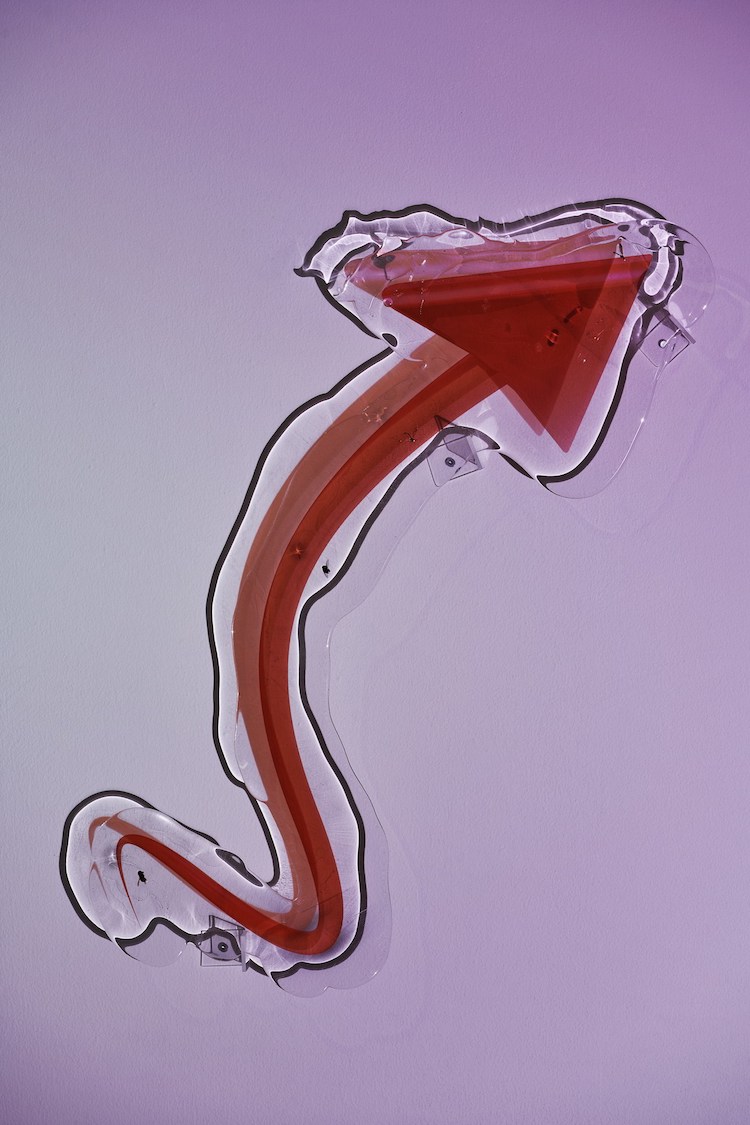
All photographs: Tõnu Tunnel, Katja Novitskova © Art Museum of Estonia KUMU, kumu.ekm.ee